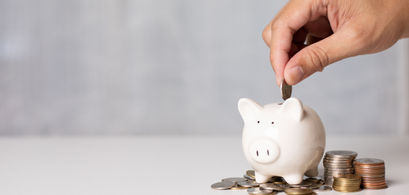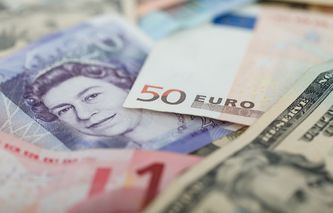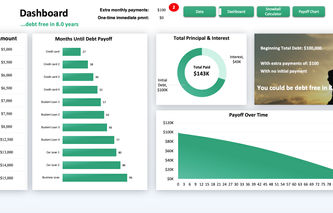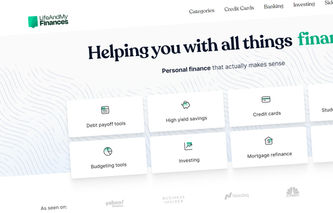We reviewed dozens of the top savings accounts and graded them based on interest rates, fees, saving tools, account types, and additional features. In the end, we narrowed them down to the top 12 savings accounts on the market.
Summary
| Name | Score | Visit | APY | Min Deposit | Welcome Offer | Monthly Fee | Disclaimer | |
|---|---|---|---|---|---|---|---|---|
 | 9.8 | Visit | 4.15% | N/A |
| Name | Score | Visit | APY | Min Deposit | Welcome Offer | Monthly Fee | Disclaimer | |
|---|---|---|---|---|---|---|---|---|
 | 9.8 | Visitdiscover.com/online-banking/savings-lng-04 | 4.00% | $200 |
| Name | Score | Visit | APY | Min Deposit | Welcome Offer | Monthly Fee | Disclaimer | |
|---|---|---|---|---|---|---|---|---|
 | 9.6 | Visitamericanexpress.com/en-us/banking/online-savings/account | 4.00% | N/A |
| Name | Score | Visit | APY | Min Deposit | Welcome Offer | Monthly Fee | Disclaimer | |
|---|---|---|---|---|---|---|---|---|
 | 7.0 | Visitbarclays.com | 4.00% | N/A |
| Name | Score | Visit | APY | Min Deposit | Welcome Offer | Monthly Fee | Disclaimer | |
|---|---|---|---|---|---|---|---|---|
 | 10.0 | Visit | 4.25% | $100 | N/A |
| Name | Score | Visit | APY | Min Deposit | Welcome Offer | Monthly Fee | Disclaimer | |
|---|---|---|---|---|---|---|---|---|
 | 9.4 | Visit | 4.75% | $100 | N/A |
| Name | Score | Visit | APY | Min Deposit | Welcome Offer | Monthly Fee | Disclaimer | |
|---|---|---|---|---|---|---|---|---|
 | 3.0 | Visitcapitalone.com | 4.00% | N/A |
| Name | Score | Visit | APY | Min Deposit | Welcome Offer | Monthly Fee | Disclaimer | |
|---|---|---|---|---|---|---|---|---|
 | 9.0 | Visit | 3.10% | $100 | $100 |
| Name | Score | Visit | APY | Min Deposit | Welcome Offer | Monthly Fee | Disclaimer | |
|---|---|---|---|---|---|---|---|---|
 | 8.4 | Visitwww.bankofamerica.com | 0.01% | $100 | N/A | $8 |
Best Savings Accounts 2025
SoFi – Best overall
Marcus by Goldman Sachs – Best for quick transfers
Discover – Best for CD rates
American Express – Best for American Express customers
Ally – Best for checking deposits
Barclays – Best for unlimited transfers
Lending Club – Best for high yield savings
Bread Savings – Best for large deposits
Capital One – Best for social banking
Alliant Credit Union – Best for kids
PNC – Best for traditional banking
Bank of America – Best for brick-and-mortar savings
Note: Welcome bonuses can change and expire—so check the bank’s website for more details.
Check out more top banking accounts:
Best Overall Pick—SoFi
Account Basics
DETAIL | METRIC |
APY | 4.30% |
Minimum balance | $0 |
ATM card offered | Yes |
Free ATM use | Yes |
Checking account | Yes |
Fees/Restrictions
TYPE | DESCRIPTION |
Monthly fee | None |
Overdraft fee | None |
Why we picked it
Why choose between French or Italian food when you could have both? Sofi might not have the same “je ne sais quoi” as your favorite cuisines—but its two-in-one checking and savings solution is sweet enough to get you hooked. SoFi has a high enough APY that you’d think there was a catch (spoiler—there is none).
But that’s not just for savings—your checking account also comes with a solid 1.20%APY. If you think two-for-one could be confusing—the online features make it a cakewalk with easy tools to deposit checks, monitor savings, and transfer funds.
Another handy tool is their Vault feature—you can keep tabs on your financial and life goals. Everything is kept nice and protected—your account is fully FDIC insured up to $250,000.
Pros
- Access to 55,000 Allpoint ATMs.
- Cash bonus of $50–$250 with direct deposits.
- No minimum deposit or monthly fees.
Cons
- Purchases are declined if you withdraw over $50.
- Cash deposits cost up to $4.95—only available through third-party retailers.
Best for Quick Transfers—Marcus by Goldman Sachs
| Name | Score | Visit | APY | Min Deposit | Welcome Offer | Monthly Fee | Disclaimer | |
|---|---|---|---|---|---|---|---|---|
 | 9.8 | Visit | 4.15% | N/A |
Account Basics
DETAIL | METRIC |
APY | 4.15% |
Minimum balance | $0 |
ATM card offered | No |
Free ATM use | No |
Checking account | No |
Fees/Restrictions
TYPE | DESCRIPTION |
Monthly fee | None |
Overdraft fee | None |
Why we picked it
You’ve finally been forced along to your (never-met-before) future brother-in-law’s Vegas bachelor party—you need money fast.
Well, you’ve hit the jackpot with Marcus by Goldman Sachs—they offer same-day or scheduled transfers up to $100,000 (to or from other banks). Before the slots suck you in—you can use the Marcus Insights tools to keep track of your cash and be strategic with your saving or spending decisions.
If your gambles haven’t paid off in the past—no worries, there’s no credit check needed to open a savings account. Whether you’re surrounded by the bright lights of Vegas or tucked up in bed (where you’d rather be)—you can use the highly-rated app anywhere you like, with 24/7 customer service support.
Pros
- No minimum deposit or monthly fees.
- Same-day and scheduled transfers.
- Handy tracking tools.
Cons
- No debit or ATM cards.
- No checking or money market accounts.
Best for CD Rates—Discover High Yield Savings
| Name | Score | Visit | APY | Min Deposit | Welcome Offer | Monthly Fee | Disclaimer | |
|---|---|---|---|---|---|---|---|---|
 | 9.8 | Visitdiscover.com/online-banking/savings-lng-04 | 4.00% | $200 |
Account Basics
DETAIL | METRIC |
APY | 4.00% |
Minimum balance | $0 |
ATM card offered | No |
Free ATM use | No |
Checking account | Yes |
Fees/Restrictions
TYPE | DESCRIPTION |
Monthly fee | None |
Overdraft fee | None |
Why we picked it
Unlike the CDs of the past, Discover is stepping into the future with its impressive CD rates. If you’re just as clueless about CD rates as Gen Z is about pre-iPod music— a CD (certificate of deposit) is a type of savings account that pays higher interest rates.
Discover offers a bunch of CDs with term lengths of up to 10 years—enough time for Apple to roll out a hundred more overpriced music devices. (And, just like with Apple, you have to splash out to get the good stuff—and pay a minimum deposit of $2,500 for a CD account.)
But, they’re not out to take all your money—the bank offers up to $200 for opening your first Discover Online Savings account. You’ll also get 1% cash back if you spend up to $3,000 on your debit card every month with their checking account.
Pros
- No hidden fees.
- Wide range of ATMs.
- Paychecks are available up to two days early with a direct deposit.
Cons
- Only one physical branch location.
- Cash deposits aren’t accepted.
Best for American Express Customers—American Express
| Name | Score | Visit | APY | Min Deposit | Welcome Offer | Monthly Fee | Disclaimer | |
|---|---|---|---|---|---|---|---|---|
 | 9.6 | Visitamericanexpress.com/en-us/banking/online-savings/account | 4.00% | N/A |
Account Basics
DETAIL | METRIC |
APY | 4.00% |
Minimum balance | $0 |
ATM card offered | No |
Free ATM use | No |
Checking account | Yes |
Fees/Restrictions
TYPE | DESCRIPTION |
Monthly fee | None |
Overdraft fee | None |
Why we picked it
Remember telling your parents about that kid in school who would tease you—only for them to tell you it means they like you?
Don’t hate them, they meant well—but by now youhopefully know that if you want someone to stick around, you show them you appreciate them. American Express has this all figured out—after winning the top spot for Customer Satisfaction with Savings Accounts from Online Only Direct Banks. How did they do it? (Schoolkids and singletons, take note.)
They don’t charge any fees and offer a range of CDs with a 4.25% APY. American Express lets you easily transfer your savings to external bank accounts—they’ve also sealed the deal with a rewards checking account (exclusive for American Express cardholders).
Pros
- Strong 24/7 customer service.
- Simple online transfers.
- 4.25% APY on a range of CDs.
Cons
- No ATM or debit cards.
- Caters to American Express cardholders.
Best for Checking Deposits—Ally
Account Basics
DETAIL | METRIC |
APY | 4.00% |
Minimum balance | $0 |
ATM card offered | Yes |
Free ATM use | Yes |
Checking account | Yes |
Fees/Restrictions
TYPE | DESCRIPTION |
Monthly fee | None |
Overdraft fee | None |
Why we picked it
You’ve finally got your paper paycheck from work. But, instead of payday drinks (or a takeaway for one), you have to wait until the bank is open—then force yourself out of bed, wait in line, and deposit your check.
If you prefer the comfort of your bed (don’t we all),Ally has an eCheck Deposit℠ that lets you deposit checks from your smartphone with a photo. There are also a bunch of online tools that help you organize your money, set goals, and get personalized recommendations.
When you’re ready to venture out, you’ll be able to make unlimited, free ATM withdrawals from over 43,000 Allpoint® ATMs across the country. (And if you’d rather stick to the local ATM—Ally will reimburse you $10 per statement cycle for any fees charged.)
Pros
- Unlimited free ATM withdrawals.
- Comes with a checking account and debit card.
- Ally eCheck Deposit tool.
Cons
- Money market account doesn’t accept cash deposits.
- $100 minimum deposit.
Best for Unlimited Transfers—Barclays
| Name | Score | Visit | APY | Min Deposit | Welcome Offer | Monthly Fee | Disclaimer | |
|---|---|---|---|---|---|---|---|---|
 | 7.0 | Visitbarclays.com | 4.00% | N/A |
Account Basics
DETAIL | METRIC |
APY | 4.00% |
Minimum balance | $0 |
ATM card offered | No |
Free ATM use | No |
Checking account | No |
Fees/Restrictions
TYPE | DESCRIPTION |
Monthly fee | None |
Overdraft fee | $5 per overdraft |
Why we picked it
In a perfect world, we’d keep our money tucked away in a savings account and watch it grow. In reality, we have bills popping up, unexpected emergencies—and those new sneakers we just had to buy.
While some banks put a cap on transfers, Barclays has no limit on how many withdrawals and transfers you make from your savings account. You never know when the urge to buy new shoes will take over—so Barclays offers 24/7 online access for external bank transfers and direct deposit.
But—aren’t you here to save? Barclays has a range of CDs to choose from—with rates ranging from 4.2%–4.8% APY (up to five years).
Pros
- Unlimited transfers.
- Mobile check deposits.
- Range of CDs up to five years.
Cons
- No ATM access.
- $5 fee if you make over six transactions per month.
Best for High Yield Savings—Lending Club
| Name | Score | Visit | APY | Min Deposit | Welcome Offer | Monthly Fee | Disclaimer | |
|---|---|---|---|---|---|---|---|---|
 | 10.0 | Visit | 4.25% | $100 | N/A |
Account Basics
DETAIL | METRIC |
APY | 4.25% |
Minimum balance | No minimum after initial deposit |
ATM card offered | Yes |
Free ATM use | Yes |
Checking account | Yes |
Fees/Restrictions
TYPE | DESCRIPTION |
Monthly fee | None |
Overdraft fee | None |
Why we picked it
Imagine spending years saving up for a new house—only to lose it to some hacker living on the other side of the country.
Nowadays, online banking is pretty safe—but it’s nice to get some reassurance that your cash is protected. Like many savings accounts, Lending Club is FDIC-insured for up to $250,000—but they go the extra mile with 265-bit encryption to make sure all data is in safe hands. As well as security, Lending Club offers convenience—you can access your online account at any time or place while linking all external accounts to one place.
Now for the fun part—Lending Club lets you take control by creating budgets, tracking your spending, and analyzing trends. (You can even explore a bunch of handy strategies to get yourself out of debt.)
Pros
- Free ATM card with a savings account.
- Personal finance management tools.
- Free internal and external transfers.
Cons
- No physical branches.
- Need at least $2,500 to open a CD.
Best for Large Deposits—Bread Savings
Account Basics
DETAIL | METRIC |
APY | 4.75% |
Minimum balance | $100 |
ATM card offered | No |
Free ATM use | No |
Checking account | No |
Fees/Restrictions
TYPE | DESCRIPTION |
Monthly fee | None |
Overdraft fee | None |
Why we picked it
Many of us might consider $100 here and there as a savings success. But if you want to aim a little higher (and you’ve got some pretty deep pockets)— Bread Savings could be the one for you.
If I had a load of cash to spare, I’d probably buy a fancy yacht with a tiki bar—but if saving money floats your boat, Bread Savings lets you deposit a maximum of $1 million per account and up to $10 million per customer. (Even the big shots like to save where they can, though—so Bread Savings also offers free ACH transfers and online statements.)
Not everyone has a million dollars lying around. So—to really boost your savings—Bread Savings offers a range of CDs for up to five years.
Pros
- High deposit limits.
- Easily set up a joint account.
- Customer phone line available seven days a week.
Cons
- No checking account.
- $25 for outgoing wire transfers.
Best for Social Banking—Capital One
| Name | Score | Visit | APY | Min Deposit | Welcome Offer | Monthly Fee | Disclaimer | |
|---|---|---|---|---|---|---|---|---|
 | 3.0 | Visitcapitalone.com | 4.00% | N/A |
Account Basics
DETAIL | METRIC |
APY | 4.00% |
Minimum balance | $0 |
ATM card offered | No |
Free ATM use | No |
Checking account | No |
Fees/Restrictions
TYPE | DESCRIPTION |
Monthly fee | None |
Overdraft fee | None |
Why we picked it
We’ve all gotten frustrated after waiting to speak with customer service for half an hour—only to hear robotic responses and little reassurance. Imagine a place where you could get expert advice, attend workshops—and enjoy coffee and cake while you’re there.
For Capital One customers—there’s such a place. Their cafes have a perfect blend of relaxation and useful conversation with access to money mentoring, free workshops, and community events. You can also chat with an Ambassador (no appointment necessary) who’ll help you set up a savings account and answer questions—espresso-ly for you.
Once you’ve bean there and done that—you can grow your online savings with automatic transfers and link your money to external accounts. (You can also set up financial goals and deposit checks by taking a picture on your phone.)
Pros
- Choice of 50 Capital One cafes around the US.
- No checking or savings fees.
- No minimum 360 Performance Savings account.
Cons
- No check writing.
- Cash deposits are only possible with Capital One ATMs.
Best for Kids—Alliant Credit Union
| Name | Score | Visit | APY | Min Deposit | Welcome Offer | Monthly Fee | Disclaimer | |
|---|---|---|---|---|---|---|---|---|
 | 9.0 | Visit | 3.10% | $100 | $100 |
Account Basics
DETAIL | METRIC |
APY | 3.10% |
Minimum balance | $100 |
ATM card offered | Yes |
Free ATM use | Yes |
Checking account | Yes |
Fees/Restrictions
TYPE | DESCRIPTION |
Monthly fee | None |
Overdraft fee | None |
Why we picked it
From the day your child is born until they reach adulthood—you’ll spend about $310,605 in total. And don’t even get us started on saving for college.
Surely there’s no harm in showing them the importance of saving money. With Alliant Credit Union, you can teach your kid how to make transactions, track their interest, and deposit that sizeable birthday check from the grandparents. If they won't stop asking for a remote control shark (that they’ll get bored with after a day)—you can show them how to set up financial goals and follow their progress.
And don’t worry—you won’t be completely handing the reins over. You can set up joint ownership and keep tabs on your child’s savings account whenever you want.
Pros
- Free Alliant Savings ATM card.
- Finance management tools.
- Finance management tools.
Cons
- Limited to children 12 years or younger.
- No child-friendly games or quizzes.
Best for Traditional Banking—PNC
Account Basics
DETAIL | METRIC |
APY | 0.02%–0.03% |
Minimum balance | $0 |
ATM card offered | Yes |
Free ATM use | Yes |
Checking account | Yes |
Fees/Restrictions
TYPE | DESCRIPTION |
Monthly fee | None |
Overdraft fee | $36 per overdraft |
Why we picked it
PNC (Pittsburgh National Bank) is one of the oldest banks in the US—but being a traditional bank doesn’t mean they’re behind the times (they have the online banking tools to prove it).
PNC has 2,629 locations across 27 states—and 9,523 ATMs to choose from. If you want more bang for your buck, there’s also a high-yield savings account with a 4.00% APY that’s available online or in five different states—all you need to do is pop into the bank and someone will be there to answer all your questions (or nod politely at all your complaints).
When you’re ready to embrace the online world, PNC has a virtual wallet where you can combine your checking and savings accounts. The app and website are pretty easy to use—you can make mobile check deposits, manage your savings, and compare accounts.
Pros
- Range of brick-and-mortar locations.
- Virtual wallet feature.
- Option for a high yield savings account.
Cons
- APY is below the national average.
- $5 monthly fees.
Best for Brick-and-Mortar Saving—Bank of America
| Name | Score | Visit | APY | Min Deposit | Welcome Offer | Monthly Fee | Disclaimer | |
|---|---|---|---|---|---|---|---|---|
 | 8.4 | Visitwww.bankofamerica.com | 0.01% | $100 | N/A | $8 |
Account Basics
DETAIL | METRIC |
APY | 0.01% |
Minimum balance | $500 |
ATM card offered | No |
Free ATM use | Yes, with checking account. |
Checking account | Yes |
Fees/Restrictions
TYPE | DESCRIPTION |
Monthly fee | None with $500 minimum balance. Otherwise it's $8/month. |
Overdraft fee | $10 per overdraft |
Why we picked it
Technology isn’t for everyone—and neither is banking. If the two combined are just too much to wrap your head around, the thought of a real-life person helping you out is probably music to your ears.
Bank of America has no shortage of locations to choose from—with 3,900 branches and 16,000 free ATMs across the country. Go easy on the cash, though—the “Keep The Change” program will round up any debit card transactions to the nearest dollar from your checking account and transfer the difference to your savings.
If you’ve already planned a Harry Potter marathon and absolutely can’t leave the sofa— Bank of America also has plenty of features on their mobile and online banking—with access to all your financial needs.
Pros
- 16,000 free ATMs.
- All-in-one banking solution.
- “Keep the Change” program.
Cons
- Low APY rate.
- Low APY rate.
There’s no need to spell out why savings are important—I’m pretty sure you’ve heard that from your grandparents, parents, and all your friends (who suddenly became financial experts overnight).
Having extra cash for a rainy day is great—but when you’re snowed under by dozens of banks, throwing different rates at you (and telling you they’re the chosen ones to handle all your life savings) it’ll leave you wanting to take a rain check. Trust me, finding a savings account isn’t so complicated (despite the bank's best efforts)—it’s pretty easy breezy once you break it down.
This article will tell you—
Our top picks for the best savings account.
How a savings account works.
The different types of savings accounts.
How to open a savings account.
If online savings accounts are safe.
Methodology
Saving is hard enough without having to deal with high fees, bad customer service—and an app that you can only access if nobody else is using the Wi-Fi. To make your life easier, we didn’t skimp on our research when finding the best savings account.
We focused on five different factors—
APY rates
Extra fees
Saving tools
Account types
Additional features
Everyone has different saving preferences and goals—so we’ve included a range of banks that will appeal to both you and your sworn enemy.
How Does a Savings Account Work?
Saving money has come a long way since adding a few cents to your piggy bank, but the principle is basically the same—except now you have fancy terms like APY and FDIC insurance to consider.
Savings accounts are handy if you want to save up for something big, put money away for emergencies—or build up enough cash to retire to sunny Florida. All you need to do is open a savings account at a bank, and deposit the money.
Unlike in your piggy bank days though, you’ll get paid extra for your efforts. The APY (annual percentage yield) refers to the total amount of interest you’ll earn on your savings over one year. (APY and interest rates are different across banks—so that's something to watch out for.)
How to Choose a Savings Account
Remember when the hardest savings decision was deciding between the standard piggy bank or the fancy safe with puppies on the lid? Well—welcome to adulthood, where things aren’t so simple.
But throwing a little complexity into the mix isn’t all bad—with more choice, handy tools, and the chance to earn interest on your savings, you could actually save more than a few dollars here and there.
Once you get familiar with the different savings account types and terms—you might even find it as simple as the piggy-bank method. So, let's dive in—
High Yield Savings Account
This is the one that all the banks like to jump on—and it refers to having a higher-than-average APY rate.
The Federal Deposit Insurance Corporation (FDIC) says the national APY average is 0.24% — anything above this is considered a high-yield savings account. The APY includes compound interest—the interest you earn on the money in your account over time. (There are plenty of compound interest calculators online to see how far you can grow your money.)
Most high-yield savings accounts offer an APY higher than 3% (and the higher the APY is, the more your money can grow). While the APY is a key factor to consider, you should also keep an eye out for extra fees, money management tools, and other perks, when deciding on a savings account.
Certificate of Deposit (CD)
While a CD account doesn’t come with a savings account, it’s another way of saving that’s usually offered along with your existing savings account.
So, how are CD accounts different from the standard savings account? Unlike a savings account—where you can dip in and out whenever the urge to book a plane ticket takes over—the money in a CD stays untouched (unless you want a penalty fee). Instead, you put a lump sum of money into your CD account for a fixed period in return for higher interest rates.
There are a bunch of CD rates out there, with different interests and term lengths—so why not shop around to see what takes your fancy?
Money Market Account
If you’re keen to have everything in one place, a money market account is basically a cross between a savings account and a checking account.
Like a checking account, you’ll be able to get your hands on a debit card and write checks while saving money and earning interest. Sounds pretty handy? Well, there are a few catches. Money market accounts tend to cap the number of transfers and purchases to six every month.
While the interest rates aren’t too different from a normal savings account—you might get charged a higher balance requirement or minimum deposit.
Kids Saving Account
Kids are great (at times) but they’re also expensive (most of the time). So—anything your kid can save and buy themselves will help you out—even if it’s only ten dollars for their ever-growing slime collection.
Aside from helping you save a few dollars—the main purpose of a kids' account is to teach them how to save and manage their money (since schools aren’t stepping up). The best kids' apps come with a bunch of tools to help them wrap their heads around their finances—some even offer games and quizzes to keep them entertained.
APY rates on savings accounts for kids and teens aren’t as high as typical savings accounts—but there’s usually a chance to earn some interest.
How to Open a Savings Account
Back in the day, you would walk into a brick-and-mortar bank, probably wait in line for longer than you planned, talk to a friendly bank assistant about opening an account—then feel guilty for being so impatient. While many banks still have this option—you can now skip the line (and any feelings of guilt) and open a savings account online.
Here are three simple steps you can take to open a savings account—
Set your goals
It can be pretty tempting to dip into your savings if you don’t have a solid goal or motivation for opening an account. Maybe you want to set up an emergency fund—or perhaps you want to rock up to the high school reunion in a shiny new car?
Whatever the reason, having a goal can keep you motivated, while helping you decide which bank offers the best interest rates, features, and support for you to reach your targets.
Apply online
Once you’ve found a savings account that matches your preferences—all you need to do is apply. While some banks let you apply in person, many are online only. You’ll need to submit some basic information to apply—
Your full name
Date of birth
Place of residence
Social Security number
Contact details
The whole process can last a few minutes—but it might take two to five business days to check and approve your information.
Deposit your cash
Once you’ve been approved, you’re all set to go. Some banks will make a couple of test deposits to make sure everything is up and running—which you’ll need to verify. To deposit the money yourself, all you’ll need to do is link to your bank by submitting your bank account and routing number.
Saving Accounts: Pros and Cons
Most people agree that saving money for a rainy day is a good thing—who knows when you’ll next need to book that spa weekend (for your own sanity). So, let's kick off with the pros—
Earn interest
Saving isn’t easy—there are spending temptations everywhere—so being rewarded for your efforts is always a bonus. By regularly building up your savings, you’ll earn money passively through interest—so be sure to check out the bank’s rates to find the best deals for you.
Keep your money safe
Keeping your money in a savings account is a lot safer than your childhood safe (with siblings around to crack the code). Luckily, savings accounts remain untouched by others and offer consistent returns. Most banks have FDIC insurance up to $250,000 to safeguard your money (and keep it protected from any siblings-turned-hackers).
Get rewards
While this perk might not be included in your savings account, many banks offer a rewards card for their existing customers. Some banks will even give you a cash bonus for signing up—up to hundreds of dollars. But not everything is sunshine and roses.
Perhaps not exactly cons, but there are some drawbacks to consider when shopping around for a savings account—
Fees
Some banks like to suck you in with their impressive APY rates and cashback—but always keep an eye out for any hidden fees, like minimum deposits or monthly expenses. While the perks might justify these fees—it’s still worth comparing to other banks before you commit.
Limitations
Before April 2020, federal law limited the number of withdrawals, debit card transactions, and online transfers from a savings or money market account to six per month. The law has since been revised—so customers can make unlimited withdrawals and transactions—but some banks will still charge a fee if you go over six per month.
Are Online Savings Accounts Safe?
We get it — you’re putting all your savings into the hands of an online bank when you’d much rather keep it glued to your own hand. As that’s not possible (doing the dishes would be a nightmare)—an online savings account is your best alternative.
Most banks have your savings protected by the Federal Deposit Insurance Corp—which covers $250,000 per depositor for each FDIC-insured bank. The insurance will also cover your savings account, CDs, money market accounts, and checking accounts (though it doesn’t include stocks, bonds, or other investment products).
If you need coverage for amounts over $250,000—your best bet is to open other accounts with different banks (without going over the insured amount to keep everything protected).
What Are the Interest Rates on a Savings Account?
Interest rates are different across banks—taking the time to compare rates really pays off. The average APY for a standard savings account is only 0.24%—but when you throw high-yield savings accounts into the mix, that number shoots up to over 3%.
How often do savings account interest rates change? APY rates are variable—so there’s no guarantee they’re going to stay the same. Usually, banks will change their rates to get more customers—so it's not usually a bad thing. Interest rates usually go up or down if there’s a change in the economy—leading to the Federal Reserve Open Market Committee revising their rates (this happens at the end of every month, quarter, or every six months).
Key Takeaway
We’ve talked about interest rates and APY a lot—and it’s something the banks like to latch on to get your attention. Yes—the APY is a key factor when choosing a savings account—but there are a bunch of other things to consider too (not to mention, APY rates can change at any time).
Keep your saving goals in mind, and take your sweet time when checking out the features of each savings account to see which bank aligns best with what you need.






.jpg)



